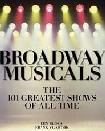SITE GUIDE
SEARCH
ADVERTISING AT CURTAINUP
REVIEWS
FEATURES
NEWS
Etcetera and
Short Term Listings
LISTINGS
Broadway
Off-Broadway
NYC Restaurants
BOOKS and CDs
OTHER PLACES
Berkshires
London
California
New Jersey
Philadelphia
Elsewhere
QUOTES
TKTS
PLAYWRIGHTS' ALBUMS
LETTERS TO EDITOR
FILM
LINKS
MISCELLANEOUS
Free Updates
Masthead
Writing for Us
A CurtainUp Los Angeles Review
Dickie and Babe
| I know the future is with me and what I stand for here; not merely for the lives of these two unfortunate lads but for all boys and all girls; for all of the young and, as far as possible, for all of the old. I am pleading for life, understanding, charity, kindness, and the infinite mercy that considers all. — Clarence Darrow in his closing statement for the defense of Nathan Leopold and Richard Loeb.
|
They were both rich and brilliant. Leopold spoke 11 languages. Loeb, the youngest ever graduate of the University of Michigan, was the son of the man who ran Sears & Roebuck. "There's no one like us," is their motto, inspired by a thorough immersion in Jack London's The Sea Wolf and the Superman theories of Nietsche who, a decade later, inspired that other bloody-handed egoist, Adolph Hitler.
After an increasingly escalating series of pranks ranging from robbing Loeb's fraternity house to burning a building, Loeb insisted they were ready for the big time. Murder. It was a thrill killing, not pure and not simple. They wanted to see if they could get away with it.
There's an element of two boys in a pissing contest and a homoerotic element. The tall, charismatic and breathtakingly handsome Loeb bribes Leopold by promising him sexual favors, which are detailed on the witness stand by Dr. Healy, as told to him by the boys. Unfortunately Dr. Healy chooses to whisper the shocking truths which may be historically accurate but are almost inaudible to the audience.
Henning begins his play when the boys are 15 and shows us their families, their twisted relationship fueled by Leopold's jealous obsession with Loeb and Loeb's increasingly psychotic behavior. The playwright has done his homework, thoroughly researching the archives and giving painstaking attention to period details.
However, the early scenes make the play longer than it needs to be and the monologues, though verbatim from trial transcripts. This isn't as dramatic as it should be but Henning is a brilliant director. His techniques include simultaneous confessions from the boys, using lighting to spotlight characters and eliciting strong, natural performances from most of his actors. Roy Rede makes the tiny stage work by using swivel chairs on wheels to bring his characters front and center against the dark wood background of a jury box and video projections of the Chicago setting.
Aaron Himelstein's Babe is usually low-key but has a burning intensity. Nick Niven's Dickie has Loeb's golden beauty and plays the other end of the spectrum, high-key with a manic giggle. His Loeb is always on and there's little sense of his academic brilliance which makes the characterization less intriguing than it might have been.
The supporting cast all play multiple roles. The most memorable cameos come from Michael Urie as Loeb's brother Allen and States Attorney Robert Crowe; Weston Blakesley as Darrow; Charlie Schlatter, as the whispering Dr. Healy; J. Ridney Nash as Hamlin Buchman, a tutor whom the boys torment; Vicki Lewis, the lone woman who ranges from Leopold's mother to Loeb's last date Patches; and little Caye Clark who plays all the children from Loeb's little brother Tommy to the unfortunate Bobby Franks whose strangling is graphically depicted.
Darrow's humanistic and impassioned plea and, according to the judge, the age of the defendents got them life sentences. The play ends with the murder of Loeb in prison by another inmate. Not shown is Leopold's release 30 years later. He went to Puerto Rico where he worked in a hospital, studied birds and married a doctor's widow.
Ironically the The Crime of the Century, as this case was headlined, is set to music just two blocks away in the excellent Thrill Me. Although Dickie and Babe is undoubtedly a valid contribution to the Loeb/Leopold canon, it demonstrates the difficulties of docudrama and the value of the imagination
|
DICKIE AND BABE Playwright/Director: Daniel Henning Cast: Aaron Himelstein (Babe), Nick Niven (Dickie), Charlie Schlatter (Alvin Goldstein, Dick Rubel, Max Schrayer, Dr. Healy), Weston Blakesley (Guy, Walter L. Jacobs, Clarence Darrow, Dr. Bowman), Vicki Lewis (Edna, Florence Leopold, Hotel Clerk, Flora Franks, Susan Lurie, Patches), Michael Urie (Allen Loeb, Leon Martel, Robert Crowe, Dr. White), J. Ridney Nash (Hamlin Buchman, Bystander, Howard Mayer, John Sharbaro, Judge Caverly, Dr. Patrick), Caye Clark (Tommy Loeb, Johnny Levinson, Bobby Franks). Set Design: Roy Rede Lighting & Sound Design: Dave Mickey Costume Design: Dana Peterson Running Time: Two hours 40 minutes, one intermission Running Dates: February 8-March 16, 2008/ Where: The Blank Theatre Company, 6500 Santa Monica Blvd, Los Angeles. Reservations: (323) 661-9827. Reviewed by Laura Hitchcock on February 15. |

Easy-on-the budget super gift for yourself and your musical loving friends. Tons of gorgeous pictures.

Leonard Maltin's 2007 Movie Guide

 >
>

